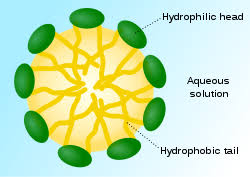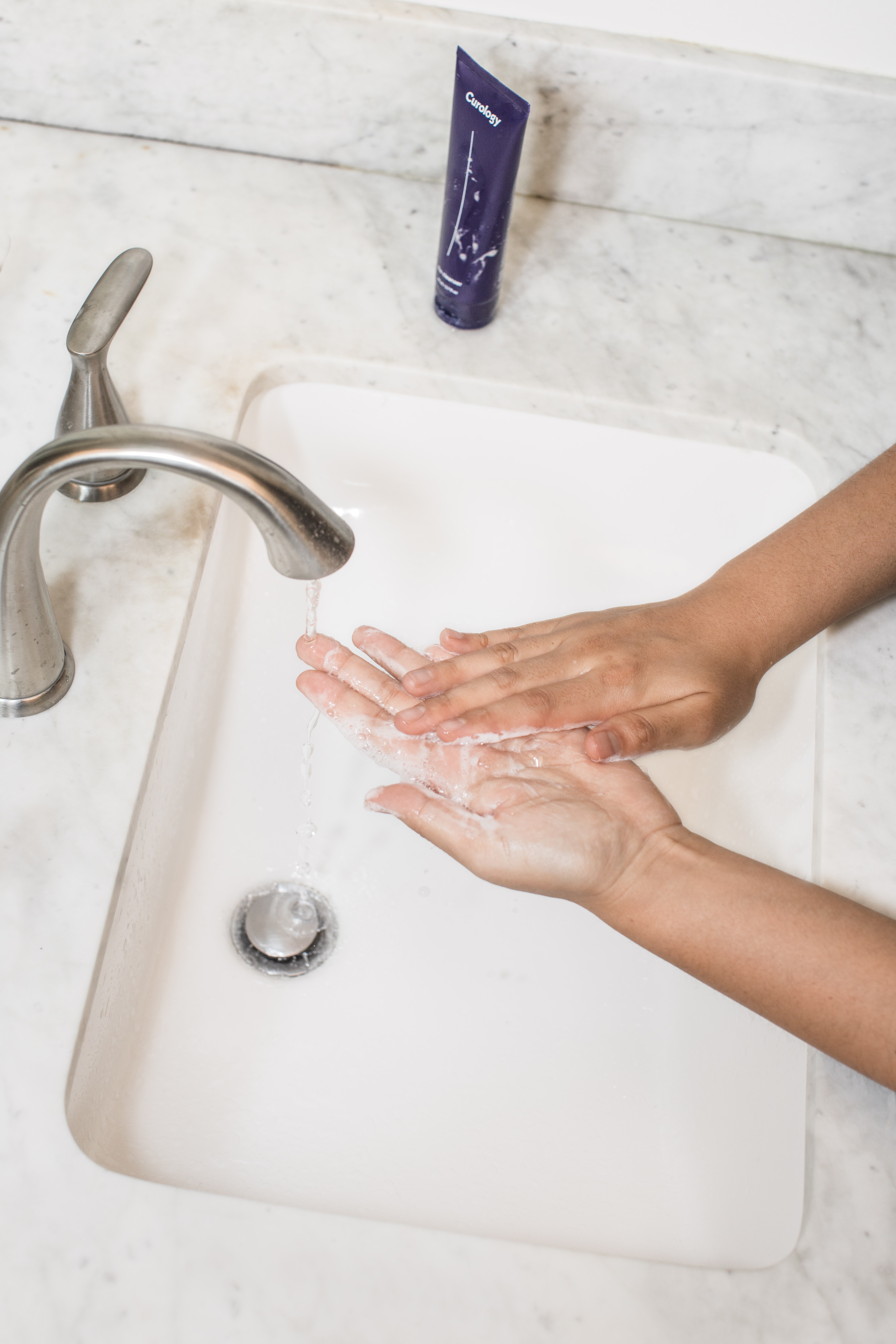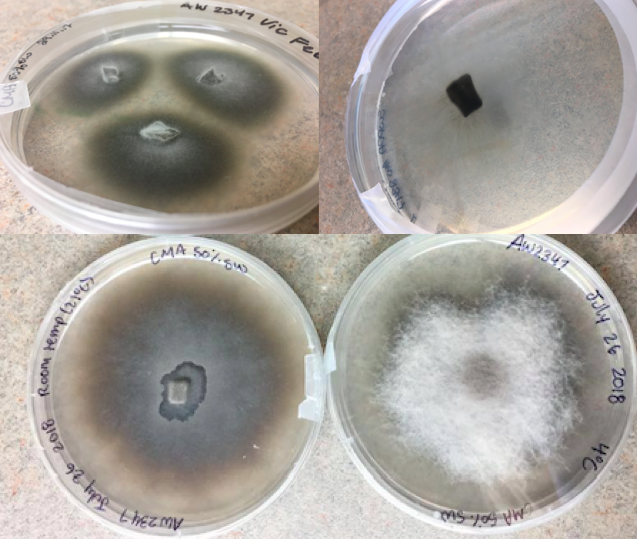You’ve probably seen the mass shortages of hand sanitizer caused by mass hysteria about COVID-19, but is stocking up on supplies in a panic worth it? Probably not, but let us discuss.
You have a few options when it comes to cleaning your hands: the classic soap and water, alcohol-based sanitizers, and non-alcohol-based sanitizers.
How does soap and water handwashing work?
A regular soap has a chemical structure with a hydrophilic “head” and a hydrophobic, lipophilic tail. The lipophilic tail will bind to oils or fats, while the hydrophobic head will bind to water. Cell walls are made of a lipid membrane, which the tail is attracted to and binds to. The cell is bound by several of these soap molecules, and the surface is then coated in hydrophilic heads that will bind to water when you rinse your hands off, taking the pathogen cells with it. This is why you cannot only rinse your hands with water. Oil and water do not mix, but the soap acts as a binding agent to make them work together. So, just like you can’t wash oil off your hands with just water, you can’t effective “wash” your hands without using soap. This process is also why an antibacterial soap isn’t necessary, a regular soap will do the job well; and exposing bacteria to antibacterial agents on a regular basis can contribute to antibiotic resistance.
 Photo source: Wikipedia – Micelle
Photo source: Wikipedia – Micelle
Alcohol-based sanitizers require a concentration of 60% ethanol/isopropanol, or n-propanol to be effective. While you may immediately think “well, I want the highest concentration possible then, more must be better”, but the minimum of 60% is effective due to the majority of the remaining ingredients being water. When the cell wall of a bacterial/fungal cell or the envelope of a virus is exposed to alcohol, it disrupts the structure of the membrane. Once the membrane has been compromised, water will move via osmosis into the cell due to the concentration gradient of high-water content in the sanitizer to the lower water content in the cell, which makes the cell explode, known as “lysing” in cellular biology.
Non-alcohol-based hand sanitizers typically uses Benzalkonium Chloride as the active ingredient with effective concentrations at 0.12%-0.13%. Like alcohol-based sanitizers, Benzalkonium Chloride destroys cells by disrupting cell wall membranes. The benefits of this type of sanitizer are that they can be less drying to skin, pose less of a fire risk, and are supposed to be effective after the solution has dried since, unlike alcohol, Benzalkonium Chloride is not volatile.
In general, hand sanitizers are not as effective in eliminating all types of pathogens compared to hand washing. What does this mean? Hand sanitizers are not always active against bacterial spores, protozoan oocysts, or non-enveloped viruses (polio is an example of a non-enveloped virus); but handwashing will be effective against them all. Hand sanitizers are also only very effective when your hands are not visibly soiled, and hand sanitizer cannot remove harmful compounds your hands may have come in contact with depending on your field of work. For example, providing hand sanitizer to agricultural workers who come in contact with pesticides during their work duties will not be ideal for protecting them against chemical hazards in addition to biological ones, so handwashing stations are preferred.
Who should opt to use hand sanitizers?
If handwashing is not an option, sanitizers are the next best thing. When is handwashing not an option? When you are physically unable to use a sink. This doesn’t necessarily mean “I’m not within 10 feet of a sink, so it is more convenient for me to whip out a bottle of sanitizer than to walk to the nearest restroom” it means “infrastructure is not built for me and it takes an excessive amount of effort to wash my hands in a public restroom”. Sinks are often built to be at a height that when a person is standing up, their hands will fall approximately where the sink is, but not everyone who uses a bathroom is necessarily able to stand up. People with disabilities face hurdles day to day where sinks are placed at a certain height for aesthetic purposes, while forgetting that everyone needs to be able to use them.
As of writing this article, there are no coronavirus cases in Nova Scotia, but locally we do have a Norovirus and the flu virus circulating in our community, so staying on top of your hygiene is still a reliable and necessary way to stay safe from all pathogens.





